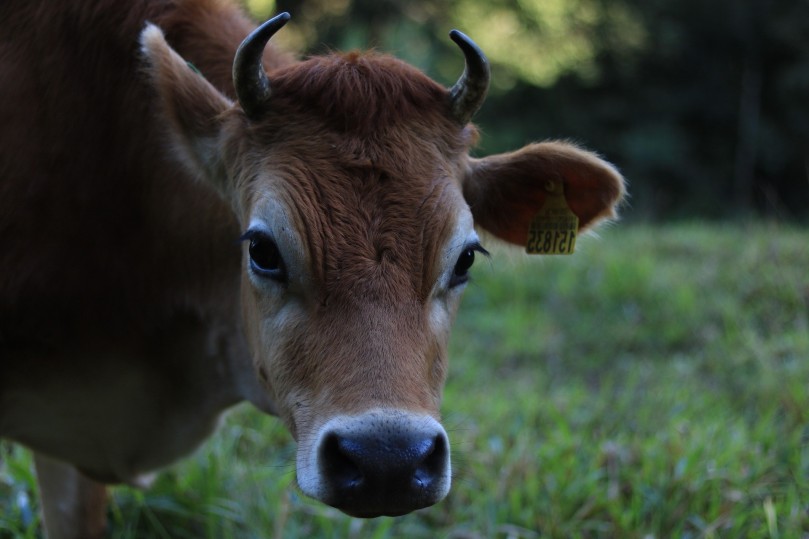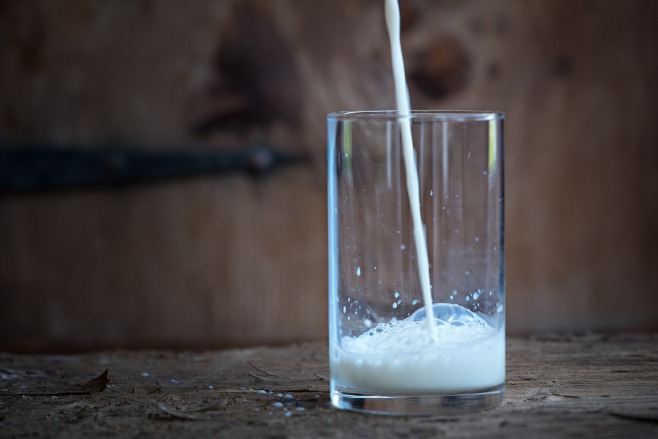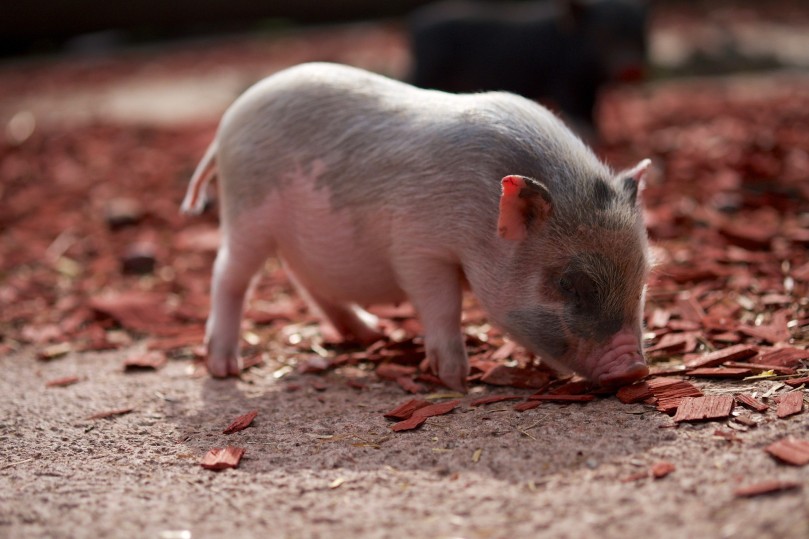 A Texas Ranching Adventure: The Family Milk Cow
A Texas Ranching Adventure: The Family Milk Cow
Driving through the dark down a Texas highway, my husband at the wheel, I shone the flashlight at the book and read,
“Although cows were being milked about 3000 B.C., there is no way of knowing how good these cows were. I don’t know of a milk record of any kind before about 350 B.C. when Aristotle found cows in northwestern Greece that were giving 32 quarts (64 pounds) a day. How many days in a row that kind of production went on he didn’t say.”
I looked up from The Family Cow, by Dirk van Loon, and squinted at the dark road ahead.
“Just think,” I said, “we get a milk cow, we’ll be more sustainable, and we’ll be part of 1000’s of years of human relationships with cows!” I was getting goosebumps on my arms.
“Think of the cream,” my husband Jay whispered. “The home-made butter! The ice cream!”
Well, that did it. We didn’t need to hear more encouragement—that around 100 A.D. Pliny reported 1000-pound wheels of cheese rolling out of the Po Valley. Nor did we require knowing that Vikings brought the first cows to the New World about 1004 A.D. and established dairy farms on Greenland of up to a 100 cows!
However, perhaps we should have taken more seriously how Dirk got his first cow home. He didn’t have a truck; he walked. Not all seven miles. Gladys ran dragging him the first mile; later, he dragged her.
Hmmm.
Lily, Our Family Cow
We found Lily by an ad in the local newspaper. A local dairyman was selling her. He lived with his parents, who helped him run their small farm and dairy; all three were rebels to American conventions, saying, “Ain’t no freedoms left in this country.” He was a little vague as to why he was selling her. He said, “She’s a Jersey, which are known to have high fat cream and a low yield, but she didn’t give as much as I’d like.” We thought that was fine as our family consisted of two adults and one baby. We didn’t require 32 quarts a day.
Because she was a Jersey, originally a breed from the Isle of Jersey, we named her Lily after the Jersey Lily, an actress from that isle, whose stage name was Lily Langtry and who had a Texas connection. A West Texas, self-made lawman named Judge Roy Bean once saw her photo, fell in love with her, named his desolate tiny town after her, and invited her to visit. Lo and behold, she did come to Langtry! But by then Bean had passed away and thus missed the sight of her waving a hanky from the train running west on the new tracks.
Back to the purchase of a cow.
We read Dirk’s advice, “Buying a cow is like buying a used car—90 percent of the gamble is in the person you buy from.” We thought the risk was low, and we bought her. We herded her into a borrowed trailer with the help of the experienced dairymen, which was still a messy process, with lots of coaxing and pulling and yelling.
We drove home and let her out in the pasture in front of the house. She ran a ways, stopped, ran, stopped. She looked about and sniffed. She grazed.
We sighed deeply. Our dreams were coming true. She’d be a healthy free-range animal. My husband Jay would call her each morn and eve, and she would eagerly come to the barn for milking. She’d have a good life with us. Jay could already taste the ice cream.

Milking Lily
The next morning, giddy, we both practiced milking. Sitting close to this big warm beast, head pressed into her side, scent of hay, animal, and milk; squeezing those teats again and again, trying to establish a rhythm, trying to squeeze out a few drops of milk. I discovered that the right technique required really strong hands. I gave up. Jay became our milkman.
Jay, always an early riser, departed the first weeks each morning at 6 with a going-to-fetch-our-milk-cow smile. Lily hung close to the house at the beginning. She was waiting for him, eager to be relieved of her heavy milk-loaded udders. Then as the days passed, she began to explore our land. Jay’s smile began to dim.
In the morning when he left with the milk pail, I began to worry how long this chore would take and what kind of mood he’d return in.
But meanwhile, I was really enjoying the book The Family Cow. As a nursing mother at that time, I was fascinated by the lactation cycle. After a birth, first, there are three to four days of the antibody-rich colostrum, (which is good for no-egg custards!), then milk production climbs fast the first three weeks, then levels for five weeks and then drops. And the fat content during each milking varies from high at the start to lower as it continues.
Some of these details were exactly the same for nursing women! Jay was less fascinated than I.
In fact, Jay’s smile was becoming a grimace. Lily wouldn’t come when he called. He was having to walk about through our pastures calling and searching. When he finally got her into the stall to milk, the struggle continued. She kicked him, she slapped him in the face with her manure sodden tail; sometimes she succeeded in stepping into the milk pail and ruining the milk. They were having a real power struggle.
The Flood of Milk
Yet most days despite the troubles, Jay brought back two pails of milk twice a day. We were swimming in milk! He’d pour the white liquid into great metal bowls that covered our kitchen counters and let it sit to let the cream rise. My grandparents arrived and donated to our cause my great-grandmother’s old centrifugal cream separating machine, which had lots of parts and looked difficult to use and endless to clean. Our solution: Jay just scooped off the top layer of cream and put it in the blender (a method recommended by a woman in the Small Farmer’s Journal). The blender made butter lickety-split. We ate it; we froze it; we bartered with it.
I could barely keep up with washing the milk paraphernalia: the milk pails, the milk bowls, the many gallon-sized pitchers. The skin on my hands was getting cracked and raw from washing so much.
Then came the evening when Jay didn’t return from milking. The baby and I waited. I put her to bed. I watched the clock. One hour. Two hours. Again and again I looked outside, gazed up towards the barn. No sign of them!
Three hours later, in the dark, he returned with one half pail of milk. His story: “She was at the farthest corner of the farm—on purpose—and she’d let me get close and then trot off, lured me, led me on a chase, trotting on and on! Through thick brush, through cactus, over rocks, over along to the neighbor’s fence where she snuck into their pasture, got the attention of a big herd of cattle and stampeded them! Then she galloped, leaping, racing, cutting left and right, milk bag splashing, through the neighbor’s pastures, and over a creek. I had to separate her out and bring her back over here. I’m scratched and bruised all over. She knew exactly where she was taking me. And there was barely any milk left for the milking.”
I shook my head. “So where is she now?”
“In her stall, where she’ll stay till morning milking. No more nights out at the cow disco!”
Lily behaved the next morning and Jay let her out for the day. But kept her in her quarters over night.
At least I didn’t have to worry about how long the morning milking would take. She’d be in the pen. He’d return promptly.
But the flood of milk continued. We could barely keep up. The freezer was full of butter; we’d bought a second used freezer and that was filling up too. Jay switched to making cheese. We needed lots of milk for his cheese fermenting projects. He went into full production, heating gallons of milk, adding rennet tablets, cutting the curds, draining the product. To produce his famous stinky cheese!
But he still had to throw out the remains of the milk from the cheese production. “It’s a waste to throw it out,” he said. “We need a pig!”

Piggy Arrives
So we bartered two pounds of butter for a runt piglet. The farmer wasn’t sure the piglet would live, because she had an abscess on her snout. We called her Piggy so as not to get attached.
Well, Piggy lived in a pen not far from where Lily was milked and Jay could see the two were becoming friends. Runty Piggy squealed and got upset when Lily was let out after morning milking. She was calling Lily back! So one day Jay let Piggy loose and the pig followed Lily.
And in the evening, Piggy returned with Lily. So each morning Jay let them leave together. Some days Piggy returned with Lily; some days Piggy returned without Lily and then led Jay to where Lily could be found.
Piggy became the dog we didn’t have. And the abscess fell off and she was happy and healthy.
So we decided to get a few calves to go along with Lily and make a herd with Piggy as herd dog. We bought three calves at an auction. One died and two lived and grew. Piggy grew and drank lots of milk. And we read that we could just milk once a day and the cow would adjust. That it was a myth they’ll dry up if milked less often. Just like human mothers, the amount of demand creates or reduces production.
We lived an easier life: Jay milked only once a day, and gave it all to Piggy if we didn’t need it. We had learned a lot, my hands had healed, and Jay’s smile had returned.
The cream was excellent. The butter sure tasted good. And the ice cream was the best you could get anywhere in this world.
But I wondered: did Aristotle know how to milk a cow?
Click here to read the first story in the Texas Ranching Adventure series.

Milking is a man’s work – that’s for sure!
LikeLike
Eva, you are always good for a laugh! Thank you!
LikeLike
I think that Aristotle must have milked a cow at least once, because he made up a lot of rules in philosophy and conjectured science. I once read that he discovered a rule for a category of animals including dogs, cats, humans and others: “If you take the most common number of offspring that are born to any creature, and double that number, that is the number of nipples that the mammal has. So people most often have one child at a time and so they have two nipples. If the creature had 3 in a litter most commonly then it had 6 nipples. But Aristotle never actually proved any of his theories because he had never heard of the scientific method. He just observed and made up stuff. Now that I think about it, I don’t think he knew how. It was probably Greek to him or was that Shakespeare? I don’t think Shakespeare milked cows either. You’re very lucky.
LikeLike
Dear Doug, Thank you very much for this thoughty and witty addition to the Aristotle angle on this blog! I love hearing Aristotle’s notes on animal categories and lactation: I suppose he went towards the scientific method as observation is part of the scientific process. His way was just more intuitive. And yes, I do feel lucky to have tried to milk a cow. Later in Austria, we had milk goats, and I did manage to milk them successfully, as milking a goat requires less hand strength. But that is the subject of a future blog series, on our farming adventures in the highlands of Austria. Best wishes, Laura
LikeLike
[…] via A Texas Ranching Adventure: The Family Milk Cow […]
LikeLiked by 1 person
Reblogged this on The Blog That Would Destroy the World and commented:
OK. I don’t know how I missed it, but I see now the reblog option. I think you’ll enjoy this adventure.
LikeLike